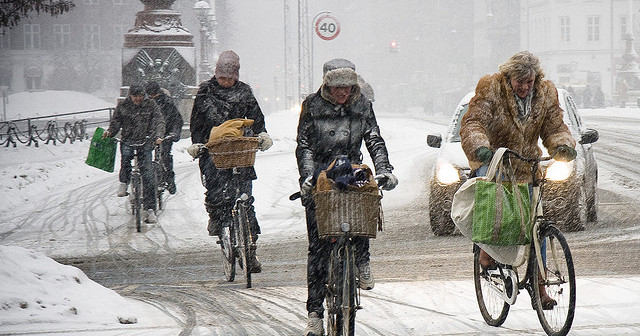~ by Andre Riopel
When I was a kid, we used to have a road hockey game going in front of our house almost every day. We played hopscotch and rode our bikes on the street in front of our house. We were the kings of the road and when cars came along they had to wait until we got out of the way before we “allowed” them to get through. How times have changed.
A few weeks ago a group of local residents had to fight to get two sidewalks included in a residential street re-design. They had to petition against the Engineering Department’s recommendation of building only one sidewalk as a cost cutting measure. In typical North American suburbia it is not unusual to have only one or no sidewalks at all in residential neighbourhoods. We seem to have forgotten that roadways are public space, not simply a facility for automobiles.
But the tides are changing. Urban planners and public health officials have realized that making cities for cars is very expensive and unhealthy. Cities all over America are beginning to realize that making it easier to drive at the expense of everything else is not desirable.
New York has boldly taken one of its most congested roads and closed it to automobile traffic. Traffic engineers argued that this would cause mayhem on adjacent streets but instead overall traffic volumes decreased. They refer to this phenomenon as “traffic evaporation”. When it becomes too difficult to go by car, people find different (and healthier) ways to get around and there is an overall reduction in traffic volumes.
Paris is taking this to the next level and is planning to ban cars from the city altogether to deal with the pollution and mayhem cars are causing on their streets. Imagine the most visited city in the world banning automobile traffic. Is it going to hurt them? There is no doubt that it will only make this great city even greater. China is also finding out that trying to fit automobiles in their growing cities is impossible so there are now planning car free cities.
So what about us here is Sault Ste Marie, when we have to fight to have two sidewalks on a quiet residential street? We already have the dubious reputation of having the second highest lane kilometer of streets per capita in Ontario (behind Timmins which is 42 miles wide and has a population of 45K or so). This is the most expensive infrastructure to build and maintain yet we keep building more despite a decline in our population. Yes, we drive more than we did 30 years ago while the general trend in North America is to drive less. The reason for this has to do with outdated planning policies at city hall. Traffic has increased significantly especially in the uptown area because of the creation of a Big Box Center.
We also used the “Walmart” model to plan the location of the new hospital on the edge of town rather than where the people live, leaving few options to get there other than to drive. This dramatic increase in retail space has caused the demise of neighborhood shopping areas like Korah Road, Gore Street and Wellington Street, creating an increased need to hop in the car to go shopping. Furthermore, we continue to plan “McMansion subdivisions” with large homes on large properties in the countryside like the proposed Pointe Estate- far from the centre of the city with no provisions for transportation other than private motorized transportation.
If saving tax dollars is the objective, this city needs to get a handle on urban sprawl.
We need to encourage development of the urban core which we are doing with the Canal District.
We also need to curb road expansion and outlying urban development.
We need a moratorium on road creation.
We need to invest and promote alternative transportation modes with mandatory sidewalks on all streets.
We need to invest into the development of the Cycling Master Plan which would provide safe routes to cycle throughout the city.
We need to reduce urban sprawl and follow the lead of more progressive cities who encourage densification instead of spreading out.
We should eliminate parking requirements for commercial and high density residential developments.
We should remove setback requirements which are only used to allow people to build parking lots in front of their business.
We should implement “road diets” reducing road width from 4 lanes to 2 on Bay, Wallace Terrace, Northern Avenue and Goulais avenue.
We should allow residents in residential neighborhoods to incorporate “traffic calming” measures to make their roads more civilized, safer and increase their property values.
To save money, instead of having only one sidewalk, why don’t we make the street one and a half lane wide (half a lane for parking and one lane for driving) rather than omitting a sidewalk. It’s cumbersome and slows traffic down which is exactly the point. Another method is to create a mid-block car barriers to convert the street into two short dead end roads.
The day we decide to build our cities and design our streets for people instead of cars we will begin to solve many of our urban woes and save money doing it.


